Shevlin Sebastian's Blog, page 86
August 19, 2016
Usha Uthup to sing in honour of Mother Teresa at Rome
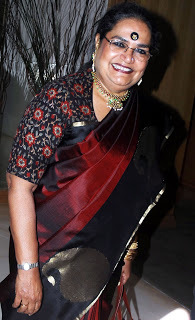
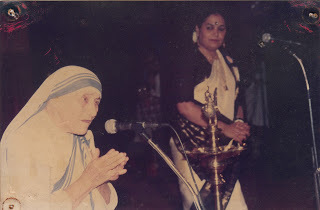 Photos: Usha Uthup; a younger Usha sharing the stage with Mother Teresa at Kolkata
Photos: Usha Uthup; a younger Usha sharing the stage with Mother Teresa at KolkataShevlin Sebastian
Whenever singer Usha Uthup would perform, during the functions of the Kolkata-based Missionaries of Charity, singing classic hymns like 'Amazing Grace’ and ‘Abide with me’ she would also sing the 1970s hit pop song, 'Beautiful Sunday'. “Mother Teresa liked it a lot,” says Usha.
Thoughts of Mother Teresa are suffusing Usha's mind, as the former's canonisation, on September 4, at the Vatican, looms closer. Thanks to a special invitation from the Missionaries of Charity, as well as the Vatican, Usha will be attending, along with her son Sunny. Incidentally, Usha had been at St Peter’s Square, on October 19, 2003, to attend the beatification ceremony of the nun. While there she also received a personal blessing from Pope John Paul 11.
Meanwhile, on the evening of September 3, Usha will be singing at a function, at Rome, which will be honouring the life of Mother Teresa.
“When Mother Teresa died [on September 5, 1997], I wrote a song called 'The Poorest of the Poor',” she says. “This song was sung throughout the four days her body was kept for public viewing, at Loreto House, Kolkata.”
Here is a sample of the lyrics:
'You filled their hearts with love and peace,Oh Mother, Mother Teresa,You loved and gave them reason to live,You gave your life for the poor,For the poorest of the poor.'
They depended on you, Mother TeresaTo see them through all their sorrows,They depended on you, from the slums to the dying,To live their todays and their tomorrows.’
At the Rome function, Usha will be singing this song as well as a Bengali song.
It will be an act of affection by Usha. Because she had known Mother Teresa for 47 years. “I became close to her because of her charismatic personality,” says Usha. “She was kind, merciful, and had a nice sense of humour. She also had unbelievable inner strength. What I liked was that she did not preach religion. In fact, she only talked about the brotherhood of man.”
And the Mother would offer advice to Usha, as she went through the ups and downs of her life. “She would also tell me, 'My child, bring a smile to everybody's face, with your singing,'” says Usha.
For the singer, Mother Teresa was already a saint when she was alive. “But this canonisation is so huge,” says Usha. “Where does it happen in our lifetime? To walk, talk, sit with somebody, have a cup of coffee, and, later, see her canonised! How many people are fortunate to see something like that? I am so grateful to God for this.”
(The New Indian Express, Kochi, Thiruvananthapuram and Kozhikode)
Published on August 19, 2016 22:01
August 18, 2016
A Paradise In The Middle Of Nowhere

 The Quiet island resort, near a branch of the Periyar river, Kerala, radiates silence, tranquility and natural beauty
The Quiet island resort, near a branch of the Periyar river, Kerala, radiates silence, tranquility and natural beautyPhotos of the resort by Ratheesh Sundaram
By Shevlin Sebastian
“On good days, you can see elephants, wild boar, peacocks, and rabbits,” says Manish, as he navigates the bus over a smooth rock surface, which is part of the road.
After five kilometres of a bumpy ride, we reach the edge of a branch of the Periyar river. There, two young men, Sanjay and Vijay, are waiting on their boat. Soon, we are going down the river. Both use bamboo poles to guide the boat. There is a gentle ‘slap-slap’ sound, as the water hits the sides. The greenery on the banks dazzles the eye. Slowly, the all-round silence begins to seep into me. The constant buzz of thoughts slows down.
After a while, the boat stops at an island. I step off and climb a series of steps to reach 'The Quiet – By The River'.
At the top stands Anil Kurian, the managing director of the Paniely Poru Hotels and Resorts Pvt. Ltd. “Welcome to paradise,” he says.
At first glance, apart from a grassy lawn, with plants and coconut trees, and an infinity swimming pool, you can see stone and wooden cottages with sloping roofs.
Anil leads me to a wooden cottage. The rooms are dark, cosy and pleasant. And there is a story behind the wood. For a long time, a family in the town of Cherthala had wanted to sell the 130-year-old wooden frame of their ancestral house. But no matter how much they tried, they could not do so. “In fact, their great-grandfather had made a prediction: since the house had been originally on an island, it would only go to another island,” says Anil. “And that was what happened. We bought it, dismantled the frames and set it up again on our island.”
When the resort was set up two years ago, Anil noticed a lot of old stones lying on the property. So he decided to use it to make the stone cottages. And inside each room, there is a mantelpiece made of the same stones. “It has a cooling effect,” says Anil. The bed, table and chairs are made of teak wood. And when you step outside, there is a small verandah, with low wooden armchairs. It is a relaxing setting. “You are in the middle of nowhere,” says Adela Drgova from Prague.
Indeed, one is. At one side of the resort, there is a cove, which is shielded by trees, and has a mini waterfall. “It is a natural jacuzzi,” says Anil. “Guests are encouraged to sit below the waterfall, to enjoy a shower. Most of the visitors spend hours in the water. In fact, we have put up floodlights, so that they can use it in the night also.”
Other activities include trekking, visiting a vegetable farm, and a one-hour boat ride at night. “We use a torch to light up the water,” says Anil. “Sometimes, large fishes come to the surface, and we can see them because of their glinting eyes. Manish, who is a local, is an expert at spearing fishes and lobsters.”
Once the catch is brought ashore, the chef CJ Mathew sets up a barbeque on the shore. The fish is cooked and consumed immediately. “Guests are also provided fishing rods, so that they can catch some fish on their own,” says Anil.
Apart from the fish, The Quiet provides local Kerala food. “This includes jackfruit, rice and sambar, beans and spinach,” says Mathew. “We make it with very little spices, to suit the foreign palate.” Interestingly, the resort grows most of these items, as well as the spices, like black pepper, on the island. “So there are no pesticides in the food we provide,” says a smiling Mathew.
Apart from Westerners, there are guests from other parts of India, apart from local corporates, who avail of day-packages on weekdays. But the surprise is that there are regular visitors from the Arab countries. “They love to come during the monsoon season,” says Anil. “When you live in a desert area, the rain is always a miracle.”
(Sunday Magazine, The New Indian Express, South India and Delhi)
Published on August 18, 2016 22:49
August 17, 2016
A Poet's Viewpoint
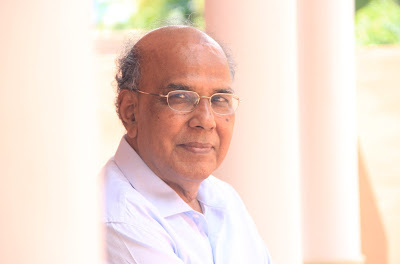
 Author TV Varkey has written a novel through the eyes of Kerala's famed poet Changampuzha Krishna Pillai
Author TV Varkey has written a novel through the eyes of Kerala's famed poet Changampuzha Krishna PillaiPhotos: TV Varkey by Melton Antony; Changampuzha Krishna Pillai
By Shevlin Sebastian
A few years ago, author TV Varkey read the biography of Changampuzha Krishna Pillai written by noted art critic MK Sanu. “It was a good and unbiased narration,” says Varkey. “Changampuzha came across as a complex but interesting person.”
Varkey had been a fan, right from his teenage years. “I love the poems 'Ramanan' and 'Vaazhakkula',” he says.
One day, sometime ago, Varkey felt a desire to write a novel in the voice of Changampuzha. So, he did research, read several books on the poet, apart from articles in magazines and newspapers. Then he sat down to write.
Two years later, the end result has appeared: a 327 page novel, called 'The Poet', which has just been published by Partridge Press, Singapore.
What is unusual is that, instead of writing in Malayalam, like his previous 12 novels and two short-story collections, Varkey has opted for English. Asked why, he says, “English has a worldwide acceptance. If I write in Malayalam, it will reach a small audience. Only a thousand copies will be printed.”
In Malayalam literature, he says, the critics have hailed only about half-a-dozen writers: O V Vijayan, M Mukundan, Paul Zacharia, Kakkanadan, Punathil Kunjabdulla, and Sethu. “They don't pay any attention to the others,” says Varkey. “Many have suffered because of this neglect.”
Changampuzha had also suffered a lot during his life, but it was a different type of pain. When he was nine years old, one evening, he came home, at Edapally, bleeding, after a fight with a friend. His shocked mother beat him with a stick. “That was a turning point,” says Varkey. “Changampuzha adored her. He never expected that his mother would hit him. He went to the back of the house and brooded for many hours.”
But his life changed when he discovered his poetic talent. “Changampuzha became a different person,” says Varkey. “He was able to touch the common man's heart with his poems on love and nature.”
However, like most great artistes, his personal life was in tatters. Apart from being an alcoholic, he was also an insatiable womaniser. “He was tall and handsome and knew how to seduce women,” says Varkey.
Changampuzha probably took after his own father. One day, his dad took Changampuzha along, as he went to his mistress's house. He went inside and made love to her, while the boy stayed outside.
Like his father, Changampuzha also never looked after his family, which consisted of his wife, mother, grandmother, and three children. “Whatever money he earned, he would spend it on drink,” says Varkey. “Nevertheless, he kept on writing.” Eventually, he published several books of poetry, while another two belong to the non-fiction category.
His turning point happened when he returned to Kerala following a stint as a clerk in the Military Accountant's Office at Pune and Kochi. Suffering from rheumatism, he was treated at a hospital near the Naval Base, at Kochi, where he met Dr. Arvind Nair (name changed).
The doctor brought him home and provided treatment. Arvind's wife, Radhika, was a beautiful woman, and an avid fan of Changampuzha. They began an affair in secret. And when Changampuzha went to Chennai, to study law, they would write letters to each other. Soon, the family came to know. At Chennai, two sons of Arvind confronted Changampuzha and gave him a severe thrashing. Later, this led to the rise of tuberculosis, and, death, at an early death of 37.
“Nevertheless, Changampuzha had packed more in his short life than many others who have lived long,” says Varkey.
Yes, indeed. The novel reveals the messy but soaring life of a creative genius.
(The New Indian Express, Kochi and Thiruvananthapuram)
Published on August 17, 2016 23:13
August 16, 2016
First Time With Legends
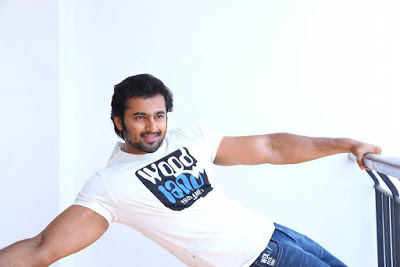
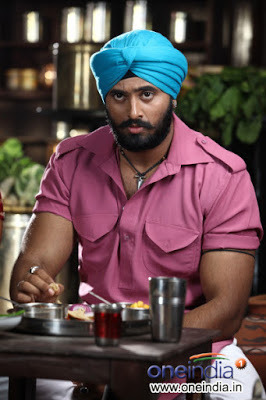 COLUMN: LOCATION DIARY
COLUMN: LOCATION DIARY Unni Mukundan talks about his experiences in the films, ‘Janatha Garage’, ‘Avarude Ravukal’ and ‘Mallu Singh’
Photos: Unni Mukundan in 'Mallu Singh' “I remembered the fantastic work that he has done, and the superstar image that he has,” says Unni.
(The New Indian Express, Kochi, Thiruvananthapuram and Kozhikode)
Published on August 16, 2016 23:52
August 15, 2016
Uniting The Souls
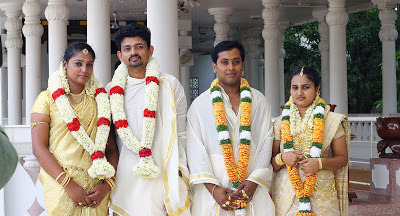
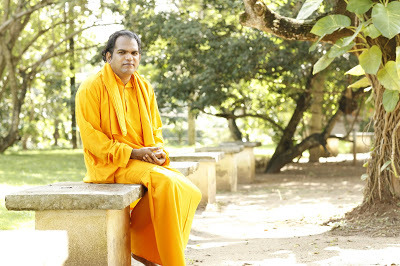 The Santhigiri Ashram, at Thiruvananthapuram, which does not believe in caste, creed or religion, promotes inter-caste and inter-religious marriages
The Santhigiri Ashram, at Thiruvananthapuram, which does not believe in caste, creed or religion, promotes inter-caste and inter-religious marriages Photos: (From left): VS Manjula, C. Jino Jose, NR Dinakaran and Krishna Chithra. Pic by Kaviyoor Santhosh. Ashram Organizing Secretary Swami Gururethnam Jnana Thapaswi
By Shevlin Sebastian“I liked her character,” he says. “Manjula is sincere, simple and down-to-earth. Although we belong to different religions, we are similar in many ways. So I felt that religion will not be a problem. Manjula also said that she has no problem in accompanying me to church.”
(Sunday Magazine, The New Indian Express, South India and Delhi)
Published on August 15, 2016 22:28
August 10, 2016
Telling Jokes On The Set
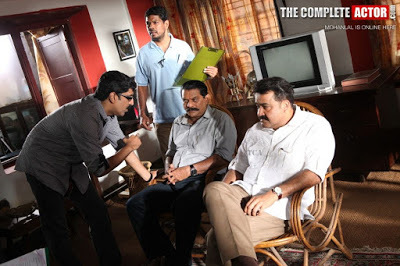
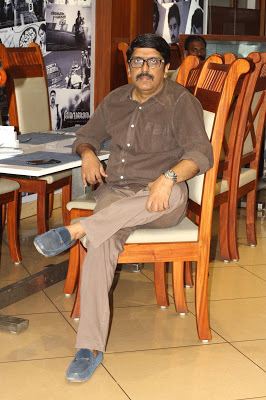 COLUMN: LOCATION DIARY
COLUMN: LOCATION DIARYDirector B. Unnikrishnan talks about his experiences in the films, ‘Grandmaster’ and 'Pramani'
Photos: Director B. Unnikrishnan with Jagathy and Mohanlal on the sets of 'Grandmaster' ; photo of B. Unnikrishnan by Kaviyoor Santhosh
By Shevlin Sebastian
Director B. Unnikrishnan was taken aback. On the set of his film, ‘Grandmaster’, at Kochi, on March 9, 2012, the final day of the shoot, veteran actor Jagathy Sreekumar told Unnikrishnan he wanted to dub his voice by using the rushes as a reference. “Usually, the dubbing is done after the first edit,” says Unnikrishnan. “But Jagathy told me he wanted to finish it.” And so it was done.
It had been an enjoyable shoot. What Unnikrishnan like the most was the good-hearted teasing that took place between superstar Mohanlal and Jagathy.
And he gives an example. “Jagathy had a particular habit,” says Unnikrishnan. “After lunch, he would always take a nap for half an hour. Once, we were shooting at Cherai beach. And, immediately, after lunch, Jagathy went to sleep in a room at a nearby house. Mohanlal saw Jagathy sleeping through a window.”
The star then borrowed a phone and called up the production executive, Mani (name changed). He changed his voice and said, “I am calling from another location. I need to talk to Jagathy immediately.”
Since Jagathy does not keep a cell phone, Mani took his mobile, went into Jagathy's room, woke him up and said, “Sir, there is a call for you.”
When Jagathy took the phone, Mohanlal said, “Sir, can I tell you an interesting joke?” And they both burst out laughing.
There is a back story to this. Mohanlal was working with Jagathy in ‘Naran’ (2005), a film directed by Joshy. They were shooting late at night, somewhere in Tamil Nadu, when a tall and broad-shouldered man approached the duo and said, in Tamil, “Excuse me.”
Both of them thought he was an important person.
The man paused and said, “Can I tell you an interesting joke?”
They found it weird and ignored him.
“Ever since that day, during the 'Grandmaster' shoot, whenever Jagathy would be resting between shots, Mohanlal would come up from behind and say, 'Can I tell you an interesting joke?’” says Unnikrishnan. “Even though Jagathy was always serious and sombre between takes, Mohanlal had the ability to make him laugh.”
On that last day, Jagathy approached Unnikrishnan and complimented him on the film. “Thereafter, he came for the pack-up party, which he usually never does. He then informed me that he would have to travel through the night to reach Kodagu (in Karnataka), where a shoot of Lenin Rajendran’s ‘Idavappathy' was taking place,” says Unnikrishnan.
Unfortunately, during the early hours of March 10, the vehicle hit a median on National Highway 17, at Tenhipalam, in Malappuram district. Jagathy suffered serious head injuries from which he has not completely recovered. “Looking back, if Jagathy had not done the dubbing, before he left, it would have been difficult for me to release the film,” says Unnikrishnan.
In another experience, on the set, 'Pramani' (2010), a young girl was appointed to play Fahadh Faasil's sister in the movie. “She was a bubbly and high-spirited girl,” says Unnikrishnan. “But all of us always treated her like a child.”
She interacted with everybody, except for Fahadh, who, true to his introvert nature, kept to himself. “She had acted with Mammooty in 'Palunku' [directed by Blessey],” says Unnikrishnan.
So, it did come as a complete surprise, when Unnikrishnan was invited to Fahadh's wedding reception, on August 21, 2014, at Thiruvananthapuram, and came to realise that the young girl on the 'Pramani' set had become Fahadh's wife.
"I jokingly reminded Nazriya [Nazim] that she first met Fahadh on the sets of my film,” says Unnikrishan. “She gave me a shy smile.”
(The New Indian Express, Kochi, Thiruvananthapuram and Kozhikode)
Published on August 10, 2016 22:35
August 9, 2016
“Keep Your Ears Close To The Ground”
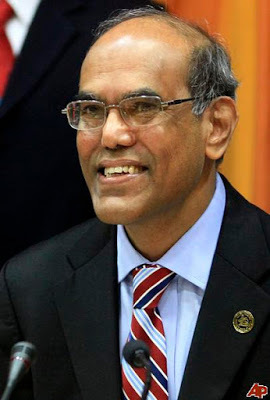
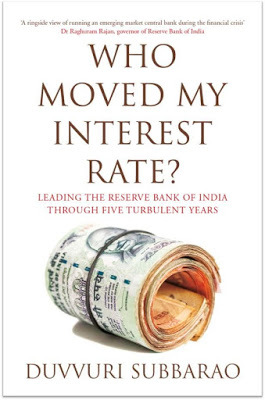 Says former RBI Governor Duvvuri Subbarao during a speech at the Centre for Public Policy Research at Kochi
Says former RBI Governor Duvvuri Subbarao during a speech at the Centre for Public Policy Research at KochiBy Shevlin Sebastian
In April, 2009, the Reserve Bank of India (RBI) was celebrating its Platinum Jubilee year. Duvvuri Subbarao, the then Governor of the RBI went to Chennai to take part in a Town Hall-style meeting, which was telecast nationally.
Around half an hour into the show, Subbarao decided to take a straw poll. He asked the 300 strong audience one question: “How many of you want the RBI to prioritise inflation over growth?”
About half the hands went up. Then he said, “How many of you want the RBI to prioritise growth over inflation? Again half the hands went up.
“There was nothing dramatic about that,” says Subbarao. “But then it struck me, just by a visual impression of the hands which went up, that people who wanted to prioritise inflation over growth were the middle-aged and lower income people, who were hurt by inflation, and finding it difficult to balance the family budget.”
On the other hand, those who wanted growth were the young professionals in the 25-35 year group. “They were concerned about jobs, career prospects and had a longer time frame,” says Subbarao. “The message that I got was that there are different constituencies in our society who priories different things. So the question for the RBI was: how does it meet these conflicting priorities?”
Subbarao had come to Kochi to give the 12th Quarterly Lecture of the Centre for Public Policy Research. His topic was: ‘Who Moved my Interest Rate?” This was in reference to his fast-selling book of the same name published by Penguin. Outside the hall, the books were selling steadily. “Nationally, the book is doing very well,” says a smiling V. Madhu, the Kochi-based Sr. Sales Manager of Penguin.
Among the topics he spoke about was how he managed the global crisis of 2008-10, the monetary policy in 2010-12, and the exchange rate in 2013. He also spoke about the difficulties of the job.
“It is very tough for the RBI to predict market reaction,” he says. “Having said that, the effectiveness on any policy depends, to a large extent, on how the market responds.”
It was an absorbing speech and kept the audience all attentive. His final piece of advice: keep your ears close to the ground. Just before he assumed the post of Governor, in 2008, he went to meet Prime Minister Manmohan Singh, a former Governor.
Singh told him, at the end of the meeting, “When you go to the RBI, you will run the risk of losing touch with what’s happening the country, through your preoccupation with the credit rate, inflation and interest rates, and money supply. Don’t get lost in the numbers. Always remember that there are real faces behind these numbers.”
Subbarao pauses and says, “I have always followed that advice.”
(The New Indian Express, Kochi)
Published on August 09, 2016 22:44
August 7, 2016
An Eye For Letters
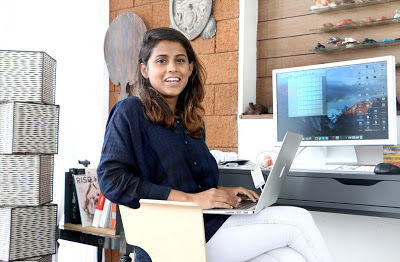
 The Kozhikode-born graphic designer Sruthi Kainady talks about her experiences on working for the new logo of the Metropolitan Museum of Art in New York
The Kozhikode-born graphic designer Sruthi Kainady talks about her experiences on working for the new logo of the Metropolitan Museum of Art in New YorkPhotos: Sruthi Kainadi by TP Sooraj; the new logo of the Metropolitan Museum of Art
By Shevlin Sebastian
Sruthi Kainady felt a little envious. Every day, she would go to work at the New York office of international brand consultant Wolff Olins (they had designed the logo for the 2012 Olympic Games at London), and she would watch as her colleagues would be working intensely on making a logo for the The Metropolitan Museum of Art (one of the world's finest museums, it has more than 20 lakh pieces of world art spanning 5000 years). Of course, she knew that she was just too new to be selected, just one month (July, 2014) after her graduation in graphic design from the Rhode Island School of Design (RISD).
But suddenly things changed. “One day, after going through several sketches, our creative director Lisa [Smith] asked the whole team to drop everything they were doing and contribute ideas,” says Sruthi.
The Museum wanted to become more accessible to its visitors, which averages six million annually from all over the world. “The team worked feverishly to visually articulate the Met’s key values,” says Sruthi.
She also worked on a few designs. Essentially, Sruthi created a sketch that connected all the letters, of the name, 'The Met', to suggest the museum's ability to connect cultures through art. The team appreciated this concept and developed it further. Thereafter, it was referred to the world-famous typographer Gareth Hague, who gave the finishing touches. ““You need an expert to refine it,” says Sruthi. “What Gareth did is what you see now.”
Yes, it is indeed amazing that the Kozhikode-born Sruthi played an important role in the logo's redesign. “I am so grateful that I got the chance to work with such a world-renowned group,” she says. “It helped me to gain valuable experience.”
Sruthi, 24, is the daughter of noted architect Tony Joseph, and Sonia, an interior designer. She says that her parents always encouraged her. “They did not force me to do anything,” says Sruthi. “They gave me the freedom to find out what I want to do.”
Right from the time, she was a child, Sruthi was obsessed with patterns, shapes and textiles. When the family would return from family trips, she would caption the photos with custom-drawn fonts. “What I do today isn’t all that different,” she says. “At that time I did not realise that there was an entire field that dealt with laying out information in a visual manner.”
Soon after her studies, in Pallikoodam, at Kottayam, till Class 10, then the Dubai American Academy, till Class 12, she went to the RISD.
Meanwhile, apart from the Met, while in RISD, for a class project, Sruthi did the logo design for the Retretti, an underground museum in Finland. “I also did the fonts for the Museum posters, applications and the web site,” she says.
In September, 2015, Sruthi was transferred to the Dubai office of Wolff Olins. While there, she has worked on a high-profile project for the government's transport department.
And she is clearly an asset to the company. Says Marie Succar, former design director at Wolff Olins, Dubai: “Sruthi always challenges the status quo. Her outlook on solving design problems is a curious, creative and logical one. What compliments Sruthi's talent is her personality. She is a sweet, open and transparent soul, which makes working with her a pure joy!'
On a mini-break, at her home town of Kozhikode, Sruthi will soon be moving to the London office of Wolff. “I am all excited about the future,” she says.
(The New Indian Express, Kochi, Thiruvananthapuram and Kozhikode)
Published on August 07, 2016 22:38
August 5, 2016
Still Going Strong
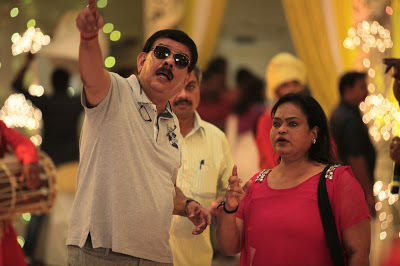
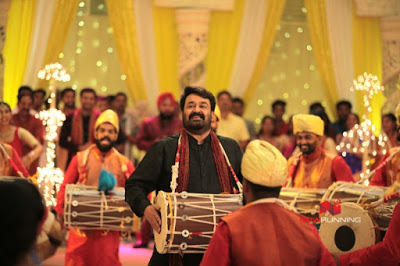 After 90 films, over 35 years, director Priyadarshan embarks on a new genre: the crime-thriller. The film, ‘Oppam’, is slated for a September 8 release
After 90 films, over 35 years, director Priyadarshan embarks on a new genre: the crime-thriller. The film, ‘Oppam’, is slated for a September 8 releasePhotos: Director Priyadarshan with choreographer Kala Master; Mohanlal in 'Oppam' (The New Indian Express, Kochi, Thiruvananthapuram and Kozhikode)
Published on August 05, 2016 22:15
The Sexual Abuse Of Women
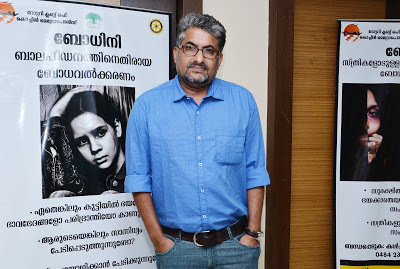
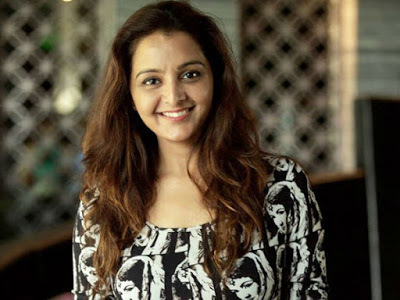 By Shevlin Sebastian
By Shevlin SebastianPhotos: Shyamaprasad. Pic by Ratheesh Sundaram; Manju Warrier
“99 women are sexually abused in India every single day,” says actor Manju Warrier. “However, in Kerala, it is one-and-a-half times the national average.” Manju was providing the commentary for the six-minute film, ‘Freedom From Fear’, which has been made by the Mollywood director Shyamaprasad.
It details the story of 23-year-old Ajitha, who works in a bank as a junior officer. Her reserve and aloofness prompts colleagues to do an online search. It is then discovered that she had been a rape victim during her college days.
“A woman’s world is turned upside down when she is abused sexually,” says Manju, who speaks with emphasis and strength, and yet with a residue of anger.
The film details how Ajitha is finally able to overcome her trauma through counselling, the support of the bank manager, as well as her family.
‘Freedom From Fear’ has been brought out by the NGO Bodhini, in association with the Rotary Club of Cochin Metropolis. And it has been sponsored by the Federal Bank. The movie was released by Justice Jayshankar Nambiar at a function in Kochi recently.
“Any change that we need to bring in society has to be done through the elite,” says the judge. “And that's what Rotarians are. They are leaders of society. If the message is spread by them into society, the people who look up at them, as their leaders, will follow them.”
Meanwhile, Shyamaprasad said, “Whenever I make a fiction film, people ask me for a message. It is difficult to answer such a question. That is why I feel happy to do a documentary where I can convey a message. This is my third film and it has been a great process.”
Earlier, Reena Sabin of Bodhini spoke about the mission of the NGO, which is a movement against child sex abuse and violence against women. Bodhini representative Blaise C. spoke about the dangers of using the social media, especially for children, while Dr. Sabin Viswanath, managing trustee of the NGO, gave the introductory remarks.
(The New Indian Express, State editions)
Published on August 05, 2016 05:29



